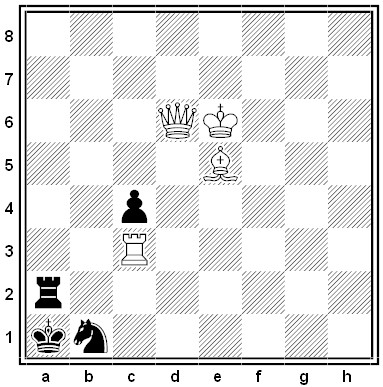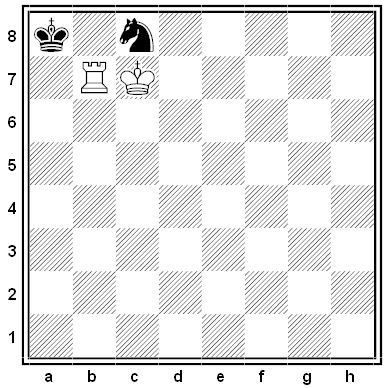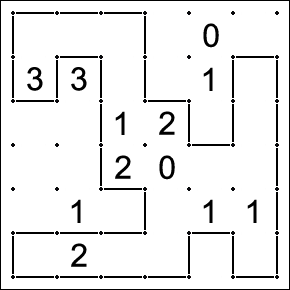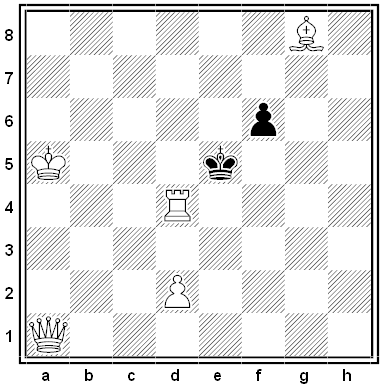Puzzles
Riddles
From a collection in Frank Mittler’s Little Book of Word Tricks (1958):
1. Pray tell me, listener, if you can,
Who is that highly-favored man
Who, though he marries many a wife,
May still stay single all his life?
2. I sit in fire, but not in the flame;
I follow the master, but not the dame;
I’m found in the church, but not in the steeple;
I belong to the monarch, but not the people.
3. Its light was mellow, soft and lazy;
One foot broke off — and it went crazy!
4. What is found in the very center of both America and Australia?
5. What divides by uniting and unites by dividing?
6. Why is a popular crooner like a doctor in an asylum?
Chessametics
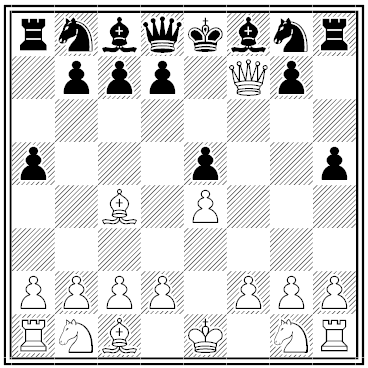
Mike Keith published this remarkable invention in the Journal of Recreational Mathematics in 1975. Suppose a chess game goes:
P-K4 P-K4 B-B4 P-R4 Q-B3 P-R4 QxP
This is checkmate, so White says “I win!” Now if the game score is written out in one column, including White’s exclamation:
P-K4 P-K4 B-B4 P-R4 Q-B3 P-R4 QxP ---- IWIN
… we get a solvable alphametic — replace each letter (and the symbols x and -) with a unique digit and you get a valid sum. (The digits already shown count as numbers, and those numbers also remain available to replace letters.)
This example isn’t quite perfect — the two moves P-R4 are ambiguous, as is the final pawn capture. Keith’s Alphametics Page has an even better specimen, a pretty variation from a real 1912 game by Siegbert Tarrasch. It’s 13 moves long and forms a perfect alphametic with a unique solution.
Black and White
Poser
A Geography Quiz
Before 1997 there were exactly three countries in the world that were both geographically contiguous and alphabetically adjacent in a list of nations. (One country changed its name.) What were they?
Slitherlink
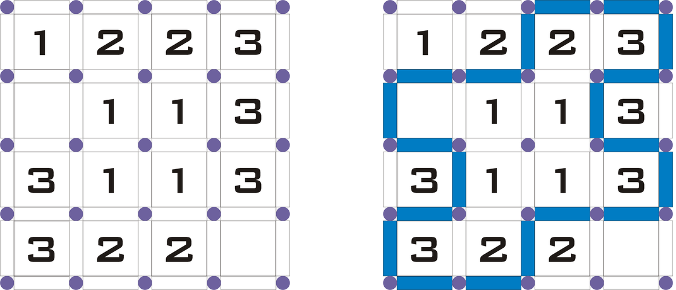
In this original logic puzzle by the Japanese publisher Nikoli, the goal is to connect lattice points to draw a closed loop so that each number in the grid denotes the number of sides on which the finished loop bounds its cell, as above: Each cell bearing a “1” is bounded on 1 side, a “2” on 2 sides, and so on.
Here’s a moderately difficult puzzle. Can you solve it? (A loop that merely touches a cell’s corner point without passing along any side is not considered to bound it.)
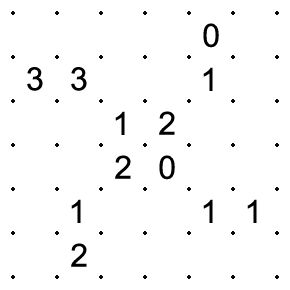
Black and White
The Roving Princess
A puzzle by University College London mathematician Matthew Scroggs: A princess lives in a row of 17 rooms. Each day she moves to a new room adjacent to the last one (e.g., if she sleeps in Room 5 on one night, then she’ll sleep in Room 4 or Room 6 the following night). You can open one door each night. If you find her you’ll become her prince. Can you find her in a finite number of moves?
Sanity Check

From Raymond Smullyan: Every inhabitant of this island either a knight or a knave. Knights always tell the truth, and knaves always lie. Further, every inhabitant is either mad or sane. Sane inhabitants always answer questions correctly, and mad ones always answer incorrectly. You meet an inhabitant of the island and want to know whether he’s sane or mad. How can you determine this with a single yes-or-no question?

